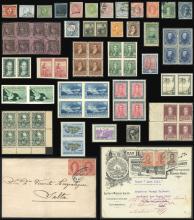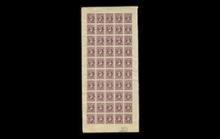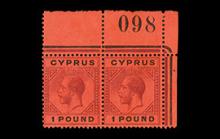Siege of Paris Mail
Published

In response to recurring provocations on the part of Prussia, on July 19, 1870 France declared war. Joined by the southern German states, the North German Confederation marched accord the border into Alsace, heading steadily on their march on Paris. When Napoleon III along with his 100,000 French troops were captured at Sedan, a bloodless revolution had taken place in Paris, resulting in the deposition of Napoleon III, and the establishment of a provisional government of national defense. By September 19, 1870 the Paris had been fully surrounded by the German armies, with all normal traffic and communications into and out of the city completely cut off. And so began a grueling siege that lasted until January 28, 1871, when an armistice was signed.
The Balloon Post
Shortly after the beginning of the siege, the director general of the Posts established the Balloon Post, which was designed to carry mail out of the besieged city of Paris.
The balloons operated by means of coal gas, and fitted with a gondola basket to carry the pilot and occasional passengers that sometimes joined him. But these balloons carried more than just bags of mail - they usually also carried an allotment of homing pigeons, which were used to carry microfilm messages back into Paris. During the time of the siege, sixty-seven different balloons ascended from Paris, of which fifty-five were authorized by the Post to carry mails.
Since balloons are difficult to control and are basically at the mercy of the prevailing winds, the pilots flying them had little control over the direction of the flights, and only moderate control over the duration and the actual landing area.
Some balloons were only able to travel a few kilometers from Paris, while others traveled great distances. One balloon even flew as far away as Norway. In general, the Paris Balloon Post was a great success, transporting more than 11,000 KG of mail out of Paris during the long siege, which lasted a hundred twenty-eight days.
Mail inside The zinc balls & Pigeon Post
In addition to the use of homing pigeons to deliver messages back into Paris during the siege, there were also attempts to insert letters inside zinc balls, which were then floated down the Seine River from Moulins. A series of nets were set up in Paris in order to trap the floating zinc balls.
This 'Boules de Moulins' service began on January 4, 1871, but deemed unsuccessful, as no zinc balls were ever recovered during the period of the Siege. Some of these balls were later retrieved, some even as late as 1982, from which the known letters had survived.








